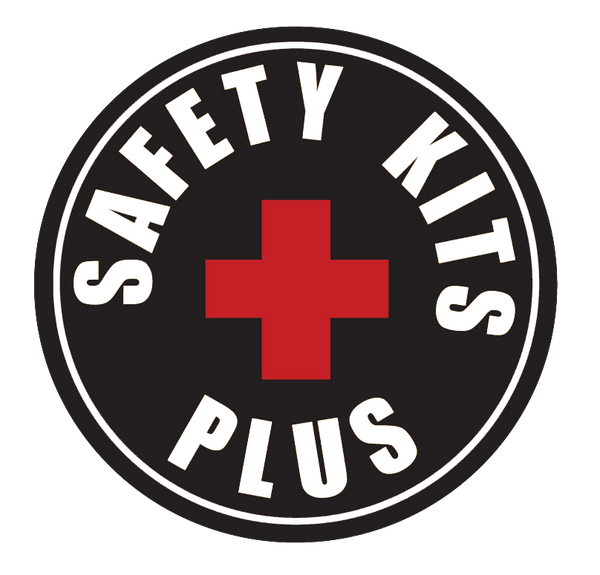Trauma Kits: Essential Guide for Emergency Response Agencies 2025
Trauma Kits Save Lives
In the high-stakes world of emergency response, having the right equipment can mean the difference between life and death. For agencies across the United States, emergency trauma kits are not just a recommendation—they're a critical necessity. Emergency trauma kits empower non-medical responders and ensure preparedness for high-risk scenarios. Their standardized design guarantees reliability and effectiveness, making them essential for any emergency response. This comprehensive guide will walk you through everything your agency needs to know about these life-saving kits in 2025.
Why Trauma Kits Are Critical for Emergency Response Teams
Recent statistics paint a clear picture: agencies equipped with FEMA-compliant trauma kits respond faster and save more lives. According to the National Emergency Medical Services Information System (NEMSIS), response times improved by an average of 2.3 minutes when using standardized, compliant equipment. This improvement translates to a 7% increase in survival rates for severe trauma cases.
FEMA's updated 2025 guidelines for trauma kits reflect the latest advancements in emergency medical care. These standards ensure that every responder has access to the most effective tools and supplies, regardless of their location or the nature of the emergency.
Key Components of Trauma Kits for Emergency Response
Trauma kits are critical tools for managing life-threatening injuries in emergency situations. While specific requirements may vary depending on the agency or organization, there are universally recognized components that every trauma kit should include to ensure preparedness and effectiveness.
Essential Components of Trauma Kits
- Tourniquets: Designed to control severe bleeding from extremities, tourniquets are a must-have in any trauma kit. Look for combat-proven models that are easy to apply under stress.
- Hemostatic Gauze: These advanced dressings promote rapid clotting to stop bleeding effectively, even in challenging conditions.
- Chest Seals: Used to treat open chest wounds, chest seals prevent air from entering the chest cavity, reducing the risk of lung collapse.
- Pressure Dressings: Essential for managing severe external bleeding, pressure dressings provide compression and stability to wounds.
- Airway Management Tools: Nasopharyngeal airways (NPAs) help maintain an open airway in unconscious patients, ensuring proper oxygen flow.
- Trauma Shears: Durable and sharp shears allow responders to quickly cut through clothing and bandages during treatment.
- Hypothermia Prevention Blankets: These lightweight blankets help stabilize body temperature and prevent shock in trauma patients.
These components address critical needs in trauma care, from hemorrhage control to airway management.
How Trauma Kits Improve Operational Efficiency
Emergency response agencies operate in high-pressure environments where every second counts. FEMA-compliant trauma kits are designed not only to save lives but also to streamline operations, ensuring responders can act quickly and effectively during critical situations.
1. Standardized Equipment for Faster Decision-Making
Trauma kits contain standardized tools and supplies, reducing variability and confusion during emergencies. Responders know exactly what to expect in every kit, allowing them to focus on treatment rather than searching for missing or unfamiliar items.
2. Modular Design for Quick Access
Many kits feature modular compartments, enabling responders to access specific tools without rummaging through the entire kit. This design minimizes delays and ensures critical supplies like hemostatic gauze or pressure dressings are readily available.
3. Scalability for Large-Scale Events
In mass casualty incidents or disasters, scalability is key. Pre-packed kits simplify logistics, ensuring rapid distribution across teams during high-demand situations.
Top 12 Essential Items for Organizational Trauma Kits
Life-Saving Gear for High-Risk Scenarios
- Tactical tourniquets (CAT or SOF-T)
- Hemostatic gauze (QuikClot or Celox)
- Chest seals (HyFin or Halo)
- Pressure dressings (Israeli bandage)
- Nasopharyngeal airways (various sizes)
- Trauma shears (7.5" minimum)
- Hypothermia prevention blanket
- Burn dressings
- Occlusive eye shield
- Needle decompression kit
- Oral airways (various sizes)
- Tactical flashlight
These items ensure that responders are equipped with everything they need to manage severe injuries effectively.
Customizing Kits for Specific Agencies
Law Enforcement: Active Shooter & Field Response Kits
For law enforcement, kits should prioritize rapid hemorrhage control and officer self-aid. Include extra tourniquets, chest seals, and compact trauma dressings.
EMS Teams: Mass Casualty Incident Add-Ons
EMS kits benefit from additional triage tags, pediatric-sized equipment, and portable suction devices.
Military & CERT Teams: Extended-Duration Mission Packs
For extended missions, add water purification tablets, extra rations, and a more comprehensive selection of medications.
Case Study: How Trauma Kits Improve Emergency Response Outcomes
Emergency response agencies across the country have reported significant improvements in operational efficiency and patient outcomes after equipping their teams with standardized trauma kits tailored to their specific needs. By implementing high-quality trauma kits, agencies are able to:
- Reduce response times by ensuring tools are easily accessible.
- Enhance survival rates by equipping responders with life-saving tools.
- Improve team coordination through standardized supplies.
This demonstrates the importance of investing in reliable trauma kits designed for emergency scenarios.
Training & Maintenance Protocols
Integrating Kits into Agency Training Programs
Develop a training curriculum that includes hands-on practice with all kit components under high-stress scenarios.
Quarterly Maintenance Checklist
- Check expiration dates on all items.
- Inspect packaging for damage or moisture.
- Verify presence and functionality of all components.
- Conduct random quality checks on 10% of kits.
FAQs
Q: How often should trauma kits be audited?
A: Conduct full audits quarterly, with monthly spot-checks on high-use items.
Q: Can we add agency-specific branding?
A: Yes, as long as branding doesn't interfere with labeling or functionality.
Conclusion: Invest in Preparedness to Save Lives
FEMA-compliant trauma kits are more than just equipment—they're a commitment to excellence in emergency response. Equip your agency today with customizable solutions designed to save lives when it matters most.
Useful Resources
Shop the Emergency Trauma & First Aid Kit collection at Safety Kits Plus for your organization.
